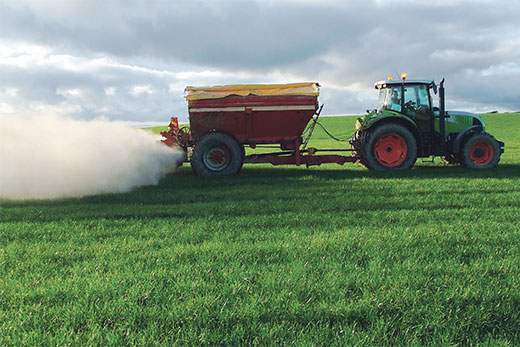Utilising precision agriculture systems to maximise nutrient efficiency in his farming operations is how Craige Mackenzie increases their productivity and profit.
And he says it’s not about high, intensive farming or broad acre – “it’s about putting the right product in the right place at the right time.”
The agronomist and head of Greenvale Pastures/Agri Optics NZ Ltd runs two irrigated farm businesses in Canterbury – an intensive cropping operation with specialist seeds, and a pasture and grain-based dairy farm, milking 1200 cows on 320ha.
“One thing to think about is while tools of technology are part of the solution it’s actually you guys sitting here and how you implement the technology that’s important,” says Craige, who addressed delegates of the 2018 NZ Avocado International industry Conference recently.
He encouraged delegates to grab hold of technology to take a real hard, data-driven look at their operations using precision agriculture technologies: “Because if we stand still we’re going to go backwards”.
Craige started with mapping his properties to show where they were losing production and profit. “And the production was one thing, but what actually mattered was the profit. If all of you go to the back corner of the farm or orchard you probably know it’s not producing that well. But who actually maps it?
“It’s easier to remember where the best pieces are but you tend to leave the bad bits alone. Well, we wanted to know where the bad areas were so we could address them.”
“And you may not pick them all up and turn them all into very profitable or high-yielding areas, but they need to stop costing you money.
“This was a wake-up call for us. And if you’re going to be efficient and environmentally sustainable – it’s very hard to be green where you’re in the red.”
Craige says farmers and growers also need to water wisely. “We need to measure, model it – if you don’t, you can’t mitigate what’s happening. And these good farming practices and the most profitable ones do go hand-in-hand.”
Craig, who was awarded a Nuffield Scholarship in 2008 that focused on understanding carbon footprint, says precision agriculture can become a solution to this, in lots of ways.
“If you can reduce your inputs by 30 per cent and maintain your outputs – you’ve just reduced your carbon footprint by 30 per cent.”
He talked of his operations’ use electromagnetic soil mapping for soil nutrients, soil variability, elevation maps, soil and moisture monitoring – but also said that “before you step into any technology you need to do the basics right”.
Utilising precision agriculture systems to maximise nutrient efficiency in his farming operations is how Craige Mackenzie increases their productivity and profit.
And he says it’s not about high, intensive farming or broad acre – “it’s about putting the right product in the right place at the right time.”
The agronomist and head of Greenvale Pastures/Agri Optics NZ Ltd runs two irrigated farm businesses in Canterbury – an intensive cropping operation with specialist seeds, and a pasture and grain-based dairy farm, milking 1200 cows on 320ha.
“One thing to think about is while tools of technology are part of the solution it’s actually you guys sitting here and how you implement the technology that’s important,” says Craige, who addressed delegates of the 2018 NZ Avocado International industry Conference recently.
He encouraged delegates to grab hold of technology to take a real hard, data-driven look at their operations using precision agriculture technologies: “Because if we stand still we’re going to go backwards”.
Craige started with mapping his properties to show where they were losing production and profit. “And the production was one thing, but what actually mattered was the profit. If all of you go to the back corner of the farm or orchard you probably know it’s not producing that well. But who actually maps it?
“It’s easier to remember where the best pieces are but you tend to leave the bad bits alone. Well, we wanted to know where the bad areas were so we could address them.”
“And you may not pick them all up and turn them all into very profitable or high-yielding areas, but they need to stop costing you money.
“This was a wake-up call for us. And if you’re going to be efficient and environmentally sustainable – it’s very hard to be green where you’re in the red.”
Craige says farmers and growers also need to water wisely. “We need to measure, model it – if you don’t, you can’t mitigate what’s happening. And these good farming practices and the most profitable ones do go hand-in-hand.”
Craig, who was awarded a Nuffield Scholarship in 2008 that focused on understanding carbon footprint, says precision agriculture can become a solution to this, in lots of ways.
“If you can reduce your inputs by 30 per cent and maintain your outputs – you’ve just reduced your carbon footprint by 30 per cent.”
He talked of his operations’ use electromagnetic soil mapping for soil nutrients, soil variability, elevation maps, soil and moisture monitoring – but also said that “before you step into any technology you need to do the basics right”.



0 Comments
Leave a Comment